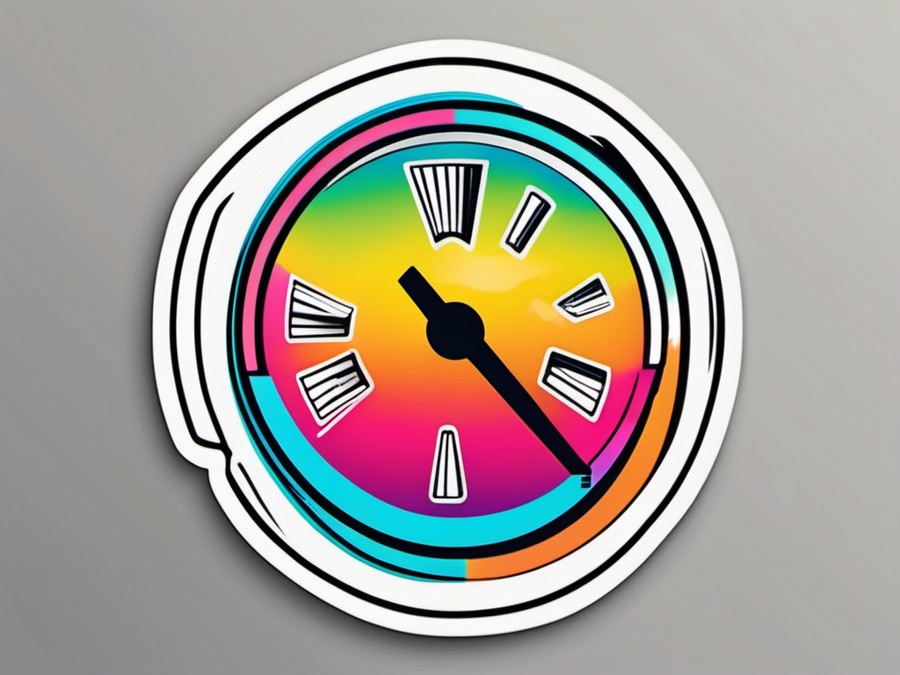· Charlotte Will · Darkroom Supplies · 5 min read
What is a Darkroom Timer and How Does It Enhance Photographic Development?
Discover how a darkroom timer enhances your photographic development process. Learn about types of timers, setting them up, and advanced techniques to improve your film photography projects.

Understanding the Basics of a Darkroom Timer
What is a Darkroom Timer?
In the world of film photography, a darkroom timer is an essential tool that helps photographers measure and control exposure times during the development process. Essentially, it’s a specialized timer designed to ensure that your prints are neither overexposed nor underexposed, achieving the perfect balance for high-quality results.
Types of Darkroom Timers
There are several types of darkroom timers available, each with its own advantages:
- Mechanical Timers: These are often simple and reliable, using mechanical movements to keep track of time. They require little power and are typically robust.
- Digital Timers: Modern digital timers offer precision and ease of use, often with features like repeat timers and multiple alarms.
- Timer Apps for Smartphones: For those on the go, there are apps that can function as darkroom timers. They’re convenient but require careful calibration and a reliable power source.
The Importance of Timing in Photographic Development
Why Timing Matters
Exposure time is crucial in photographic development. It determines how much light your photo paper or film receives, which directly affects the final image. Too short and you might end up with a barely visible print; too long and your image can become overexposed, losing detail in highlights.
Common Mistakes Without a Timer
Without a darkroom timer, you’re likely to make common mistakes such as:
- Overexposure: If you leave your print in the enlarger too long, it will become washed out and lose detail.
- Underexposure: If you underestimate the time needed, your print will be too dark and lack detail in the shadows.
- Inconsistency: Manual timing can lead to inconsistent results, affecting the quality and reliability of your prints.
Setting Up Your Darkroom Timer
Choosing the Right Timer for You
When selecting a darkroom timer, consider factors like ease of use, durability, and extra features. Whether you prefer a simple mechanical timer or a digital one with multiple functions, choose the tool that best fits your workflow and level of comfort.
Basic Setup and Calibration
- Mechanical Timers: Set the time using the dial or knob. Ensure it’s wound properly and accurate to zero before use.
- Digital Timers: Input the desired time, checking for any preset functions you might need.
- Timer Apps: Calibrate the app based on your darkroom conditions to ensure accurate timing.
Using a Darkroom Timer in Your Workflow
Integrating the Timer into Your Process
Incorporate your darkroom timer into your workflow by setting it up before you begin any exposure. This setup includes ensuring the enlarger and paper are properly aligned and that your timer is zeroed out.
Timing for Different Stages of Development
- Exposure Time: Use your timer to accurately measure the time your photographic paper is exposed under the enlarger.
- Development Time: Even during chemical development, a timer can help maintain consistency in the processing times.
- Stop Bath and Fixer Times: Ensure that your stop bath and fixer steps are timed correctly to avoid over-processing or under-processing.
Advanced Techniques with Your Darkroom Timer
Multi-exposure Printing
One of the advanced techniques you can explore with a darkroom timer is multi-exposure printing. This involves exposing the same piece of paper multiple times with different negatives or settings, allowing for creative blending and layering. Your timer helps keep track of each exposure time accurately.
Experimenting with Long Exposures
With a reliable timer, you can experiment with long exposures to create unique effects. This could involve leaving your print in the enlarger for extended periods to achieve different tones and contrasts.
The Impact of a Darkroom Timer on Your Images
Consistency and Control
A darkroom timer gives you the control and consistency needed for high-quality prints. By accurately measuring exposure times, you can achieve predictable results every time.
Enhancing Creativity
Having a reliable timer allows you to experiment more freely. You can try different exposure times and techniques without worrying about inaccuracies, leading to a more creative and expressive photographic process.
Common Questions About Darkroom Timers
Can I Use a Kitchen Timer Instead?
While a kitchen timer can be used in a pinch, it lacks the precision and features of a dedicated darkroom timer. Kitchen timers may not be as accurate or durable for the specific needs of photographic development, potentially leading to inconsistent results.
What If My Timer Malfunctions?
If your timer malfunctions, you can use alternative methods such as a stopwatch or even a kitchen timer as a backup. However, this is why it’s essential to have a reliable and well-maintained timer in the first place.
Insights from Other Enhancements
Smart Remotes and TV Experience
Just like a darkroom timer enhances your photographic development, a smart remote can significantly upgrade your TV viewing experience. It simplifies control, adds convenience, and unlocks new features, much like a darkroom timer does for your prints.
Marine Subwoofers and Boat Audio
When it comes to marine subwoofers, the enhancements are clear. They provide deeper, more precise audio experiences on boats, similar to how a darkroom timer ensures precision and depth in your photographs.
Conclusion
A darkroom timer is more than just a tool; it’s an essential component of the photographic development process. It ensures consistency, control, and creativity in your work, leading to high-quality prints every time. Whether you’re a beginner or an experienced photographer, incorporating a darkroom timer into your workflow can significantly enhance your results.
FAQs
Is a Darkroom Timer Necessary for Every Project?
While not absolutely necessary for every project, a darkroom timer is highly recommended for achieving consistent and predictable results.
How Do I Care For My Darkroom Timer to Ensure Longevity?
Regular maintenance includes keeping it clean, ensuring batteries are fresh and properly inserted (if applicable), and storing it in a safe place away from moisture and extreme temperatures.
Can You Recommend Any Specific Darkroom Timers?
There are several reputable brands like Beseler and Omega that offer high-quality darkroom timers. It’s best to choose one that fits your specific needs and budget.
How Does Using a Timer Affect My Film’s Longevity?
A timer helps ensure that your film is exposed correctly and not over-processed, which can extend the life of your prints by preventing fading and degradation.
Are There Any Tricks to Ensure My Timer Stays Accurate?
Regular calibration and comparison with other timers or stopwatches can help ensure that your darkroom timer remains accurate over time.




